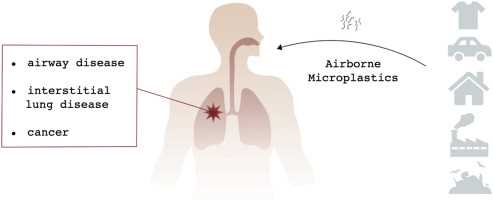
Microplastics, tiny pieces of plastic less than five millimeters in size, have become a major concern in recent years. While much attention has been focused on microplastics in our oceans and waterways, the presence of these particles in the air we breathe is also a growing problem.
Microplastics can come from a variety of sources, including the breakdown of larger plastic items, synthetic fibers from clothing, and microbeads in personal care products. These particles are so small that they can easily be inhaled and enter our respiratory system.
Once in our lungs, microplastics can cause a range of health issues. Studies have shown that these particles can trigger inflammation, damage lung tissue, and even cross into the bloodstream. The long-term effects of inhaling microplastics are still not fully understood, but there is growing concern that they could contribute to respiratory diseases, such as asthma and chronic obstructive pulmonary disease (COPD), as well as cardiovascular problems.
Furthermore, microplastics have the potential to carry and release harmful chemicals that they have absorbed from the environment. These chemicals can include endocrine disruptors, carcinogens, and neurotoxins, which can pose serious health risks when they enter our bodies.
Reducing our exposure to microplastics in the air is a daunting task, as the sources of these particles are widespread and often difficult to control. However, steps can be taken to minimize their impact. This includes reducing our overall plastic consumption, choosing natural fibers over synthetic ones, and advocating for stricter regulations on plastic production and disposal.
As the presence of microplastics in the air becomes more prevalent, it is crucial to gain a better understanding of the potential health risks associated with inhaling these particles. Further research is needed to assess the long-term effects and develop strategies to mitigate their impact on human health.
- What are microplastics and how do they get in the air?
- The sources of microplastics in the air
- How does the inhalation of microplastics affect human health?
- The potential respiratory effects of inhaling microplastics
- 1. Inflammation and respiratory irritation
- 2. Respiratory diseases
- 3. Reduced lung function
- The possible long-term health risks of microplastic exposure
- How can we reduce our exposure to microplastics in the air?
- 1. Limit the use of single-use plastics
- 2. Support companies that prioritize sustainability
- 3. Minimize indoor air pollution
- 4. Filter your air
- 5. Be mindful of outdoor activities
- 6. Support initiatives for reducing plastic pollution
- The importance of further research on the health risks of inhaling microplastics
- Question-answer:
- What are microplastics?
- How do microplastics get into the air?
- What are the health risks of inhaling microplastics?
- Can inhaling microplastics lead to long-term health problems?
- Are there any ways to reduce exposure to microplastics in the air?
What are microplastics and how do they get in the air?
Microplastics are tiny particles of plastic that are less than 5 millimeters in size. They can be found in a variety of forms, including microbeads, fibers, and fragments. Microplastics are not naturally occurring; they are mainly a result of human activities such as the breakdown of larger plastic products, plastic waste, and the wear and tear of synthetic materials.
Microplastics can enter the air through various pathways. One major source is the weathering and degradation of larger plastic items, such as plastic bags, bottles, or packaging materials, which release tiny particles into the environment. These particles can then be carried by wind currents and dispersed over large distances.
Another pathway for microplastics to enter the air is through the degradation and shedding of synthetic fibers from clothing, carpets, upholstery, and other textiles. When these items are washed or used, tiny fibers are released into the air and can be inhaled.
Additionally, microplastics can be generated from plastic waste during processes such as waste management, recycling, or disposal. When plastic waste is handled or processed, it can emit microplastic particles into the air, which can then be inhaled by individuals.
Once microplastics are in the air, they can travel long distances and be deposited in various environments, including urban areas, rural landscapes, and even remote regions. They can settle on surfaces such as plants, soil, and water bodies, and can potentially be inhaled by humans and other organisms.
In conclusion, microplastics are small particles of plastic that can enter the air through the breakdown of larger plastic items, shedding of synthetic fibers, and waste management processes. These tiny particles can travel long distances and be deposited in various environments, posing potential risks to human health and the environment.
The sources of microplastics in the air
Microplastics are tiny plastic particles that are less than 5mm in size. They can come from a variety of sources and have become a significant environmental concern due to their potential impact on human health. While microplastics are mainly associated with marine pollution, recent studies have shown that they are also present in the air we breathe.
There are several sources of microplastics in the air, including:
| 1. Synthetic fibres from textiles: | When we wash synthetic clothes like polyester and nylon, tiny fibers shed from the fabric and end up in the wastewater. These fibers can then find their way into the air through various routes, such as wastewater treatment plants and sewage systems. |
| 2. Microbeads in personal care products: | Microbeads, which are small plastic particles used in exfoliating scrubs, toothpaste, and other personal care products, can also become airborne. When we use these products and rinse them off, the microbeads can enter the air through wastewater or through direct release into the environment. |
| 3. Fragmentation of larger plastic items: | Large plastic items, such as bottles and containers, can break down over time due to weathering and UV exposure. These larger items can eventually turn into smaller microplastic particles that can be released into the air through processes like wind erosion or mechanical abrasion. |
| 4. Road dust and tire wear: | Plastic particles can also be generated from vehicle-related sources. As tires wear down while driving, tiny plastic particles are released into the air. Similarly, road dust, which contains debris from various sources including plastic, can become airborne during traffic and contribute to the presence of microplastics in the air. |
Overall, these sources highlight the diverse ways in which microplastics can enter the air and be inhaled by humans. Understanding these sources is crucial for developing strategies to reduce microplastic pollution and mitigate potential health risks associated with inhaling these particles.
How does the inhalation of microplastics affect human health?
Inhalation of microplastics can have various negative effects on human health. When microplastics are inhaled, they can enter the respiratory system and potentially cause respiratory issues. The tiny size of microplastics allows them to penetrate deep into the lungs, where they can accumulate and cause inflammation.
Furthermore, microplastics can carry harmful chemicals and pollutants. These chemicals can be released into the body upon inhalation, posing additional health risks. Some microplastics have been found to contain toxins such as heavy metals and phthalates, which have been linked to various health issues, including hormonal disruption and developmental problems.
Studies have also shown that inhalation of microplastics can lead to oxidative stress and DNA damage. The small size of microplastics allows them to cross cellular barriers and enter various tissues, where they can cause damage at a cellular level. This damage can contribute to the development of diseases such as respiratory disorders, cardiovascular diseases, and even cancer.
Additionally, the inhalation of microplastics can have indirect effects on human health. Microplastics act as carriers for other pathogens, such as bacteria and viruses, which can attach themselves to the microplastic particles. This can potentially increase the spread of diseases and infections.
It is important to note that more research is needed to fully understand the extent of the health risks associated with the inhalation of microplastics. However, the existing evidence suggests that exposure to microplastics in the air can have detrimental effects on human health, making it crucial to address this issue and reduce the presence of microplastics in the environment.
The potential respiratory effects of inhaling microplastics
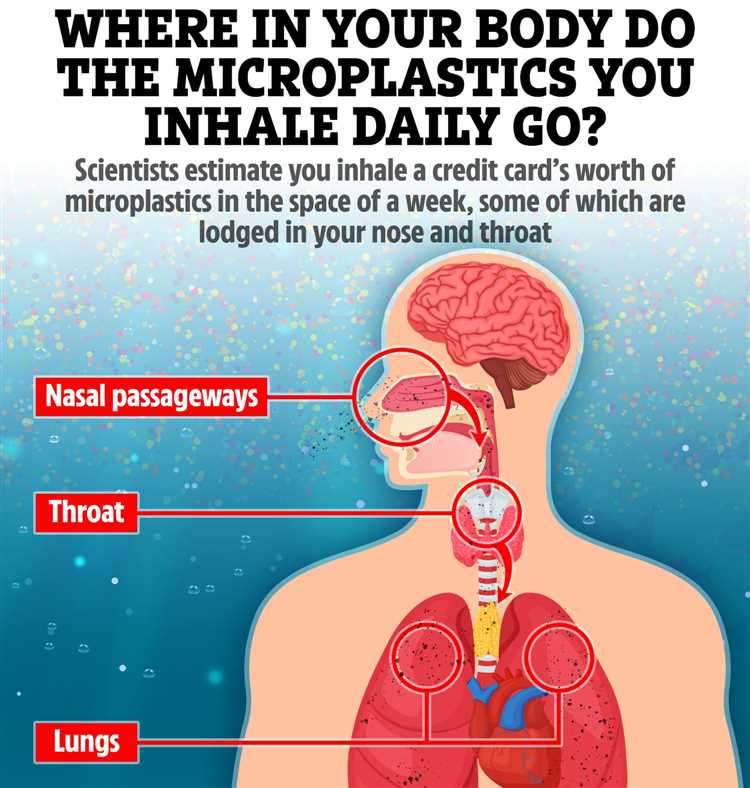
In recent years, there has been growing concern about the presence of microplastics in the air and their potential impact on human health. While much research has focused on the ingestion of microplastics through food and water, the inhalation of these tiny particles is another pathway that poses potential respiratory health risks.
When inhaled, microplastics can enter the respiratory system, where they may cause various adverse effects. Here are some potential respiratory effects of inhaling microplastics:
1. Inflammation and respiratory irritation
Inhaling microplastics can trigger inflammation in the respiratory tract, leading to respiratory irritation. The tiny size of microplastics allows them to reach deep into the lungs, where they can potentially cause irritation and damage to the lung tissue.
2. Respiratory diseases
Long-term exposure to microplastics in the air may increase the risk of developing respiratory diseases such as asthma, chronic obstructive pulmonary disease (COPD), and other respiratory conditions. The presence of microplastics in the respiratory system can exacerbate existing respiratory conditions and contribute to the development of new ones.
3. Reduced lung function
Studies have shown that microplastics can impair lung function and reduce lung capacity. Inhalation of these particles can lead to decreased lung function over time, making it more difficult for individuals to breathe properly and potentially affecting their overall health and well-being.
It is important to note that more research is still needed to fully understand the health effects of inhaling microplastics. However, the potential respiratory effects outlined above highlight the need for further investigation and the development of mitigation measures to reduce exposure to microplastics in the air.
The possible long-term health risks of microplastic exposure
While the immediate health impacts of inhaling microplastics are still being studied, there is growing concern about the potential long-term health risks associated with chronic exposure to these tiny particles.
One of the main concerns is the potential for microplastics to accumulate in the respiratory system over time. These particles are so small that they can easily be inhaled and become lodged in the lungs. Over time, this accumulation could lead to chronic inflammation and respiratory problems, such as asthma or even lung cancer.
In addition to respiratory issues, there is also concern about the potential for microplastics to enter the bloodstream and be distributed throughout the body. Studies have found traces of microplastics in various organs, including the liver, kidneys, and intestines. It is still unclear what the long-term effects of this widespread distribution could be, but it is possible that it could lead to systemic inflammation and put strain on the organs.
Furthermore, microplastics have the potential to act as carriers for other harmful chemicals and pollutants. These particles have a large surface area and can attract and absorb toxic substances from the environment. When inhaled, these microplastics could release these absorbed chemicals into the body, potentially causing further health issues.
It is important to note that more research is needed to fully understand the long-term health risks of microplastic exposure. However, the potential for these tiny particles to accumulate in the respiratory system, enter the bloodstream, and act as carriers for harmful chemicals raises concerns about the future impact of microplastic pollution on human health.
How can we reduce our exposure to microplastics in the air?
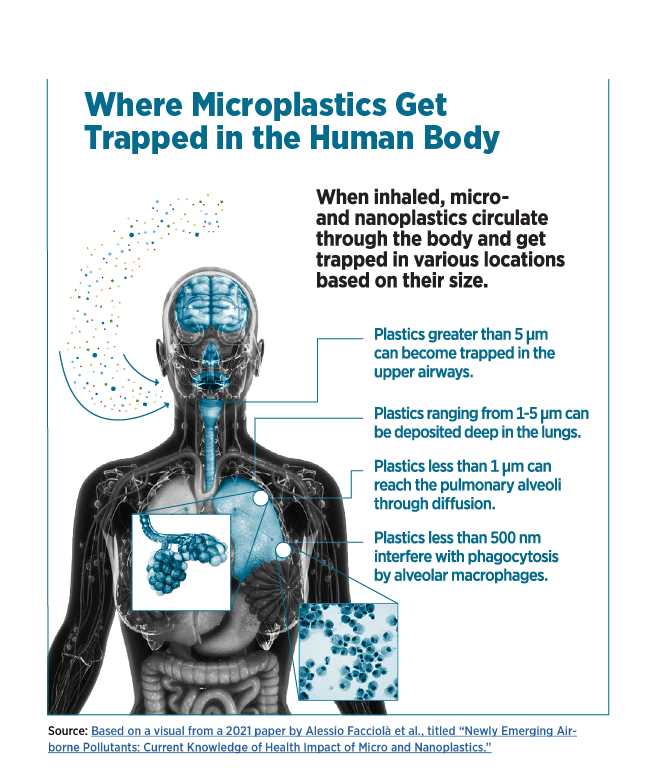
Reducing our exposure to microplastics in the air requires a combination of individual actions and collective efforts. Here are some steps you can take to minimize your exposure:
1. Limit the use of single-use plastics
By reducing the amount of single-use plastics we use, we can help minimize the production and release of microplastics into the environment. Opt for reusable alternatives such as glass or stainless steel containers, cloth bags, and metal straws.
2. Support companies that prioritize sustainability
Choose to support companies that prioritize sustainability and responsible manufacturing practices. Look for products made from natural or biodegradable materials rather than those made from synthetic plastics.
3. Minimize indoor air pollution
Indoor air pollution can contribute to the presence of microplastics in the air. Take steps to minimize indoor air pollution by using air purifiers, opening windows for ventilation, and avoiding the use of synthetic air fresheners, cleaning products, and aerosols.
4. Filter your air
Consider using air purifiers with high-efficiency particulate air (HEPA) filters to remove airborne microplastics. HEPA filters are designed to trap microscopic particles and can help reduce exposure to microplastics in the air.
5. Be mindful of outdoor activities
Avoid spending prolonged periods of time in areas with high levels of air pollution, such as busy roads or industrial areas. When participating in outdoor activities, choose locations with cleaner air, such as parks or nature reserves.
6. Support initiatives for reducing plastic pollution
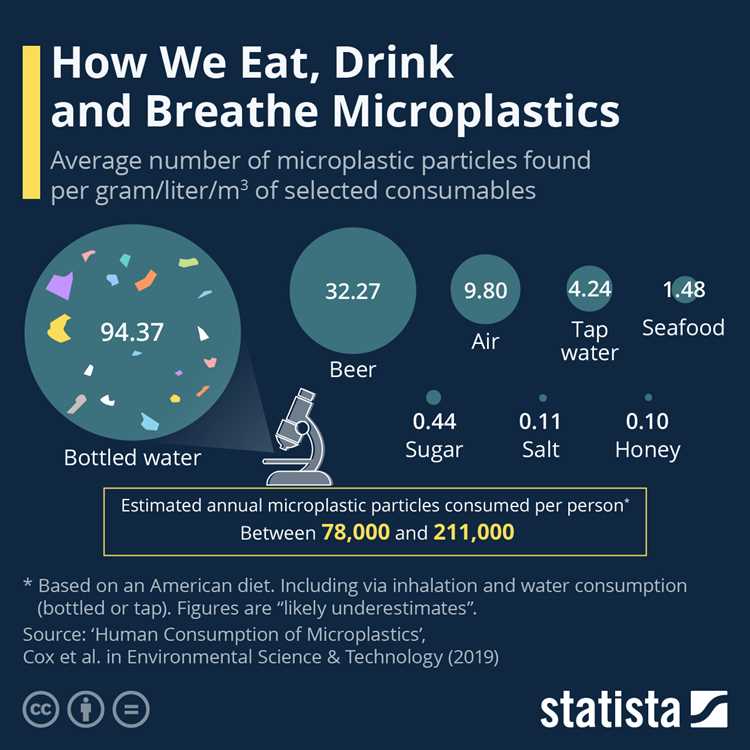
Support initiatives and organizations that work towards reducing plastic pollution and advocating for stricter regulations on plastic production and waste management. By joining forces, we can make a collective impact in reducing microplastic pollution in the air.
By taking these steps, we can help reduce our exposure to microplastics in the air and contribute to a cleaner and healthier environment for ourselves and future generations.
| References |
|---|
| Smith, M., Love, D. C., & Rochman, C. M. (2018). Microplastics in seafood and the implications for human health. Current Environmental Health Reports, 5(3), 375-386. |
| Wright, S. L., & Thompson, R. C. (2013). The physical impacts of microplastics on marine organisms: a review. Environmental Pollution, 178, 483-492. |
The importance of further research on the health risks of inhaling microplastics
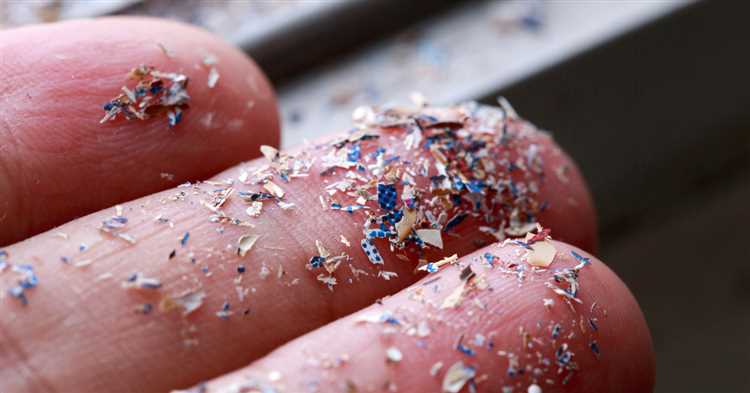
In recent years, there has been growing concern over the presence of microplastics in the air and the potential health risks associated with inhaling these particles. While studies have shown that microplastics can be found in various environments, including the air we breathe, there is still much that we do not know about the impact of ingesting or inhaling these particles.
Firstly, it is important to understand the size and composition of microplastics that are present in the air. Microplastics can range in size from a few micrometers to even smaller nano-sized particles. These small particles can easily be inhaled and may be able to reach deep into the respiratory system, potentially causing damage to lung tissues.
Studies have shown that microplastics can carry various harmful chemicals and additives, such as phthalates and bisphenol A, which are known to have adverse health effects. Inhalation of microplastics may result in the release of these chemicals into the body, raising concerns about their potential long-term impacts on human health.
Furthermore, there is limited research available on the potential health effects of inhaling microplastics. While some studies have suggested that microplastics can cause inflammation and damage to lung tissues in animal models, more research is needed to understand the specific mechanisms by which microplastics may harm human health.
Additionally, the potential for microplastics to act as carriers for harmful microorganisms is another area that requires further investigation. Microplastics have been found to harbor bacteria and other pathogens, and there is a concern that inhalation of these particles could increase the risk of respiratory infections or other diseases in humans.
Given the widespread presence of microplastics in the air, the potential for adverse health effects, and the lack of comprehensive research on this topic, it is crucial to prioritize further studies on the health risks of inhaling microplastics. This research will provide valuable insights into the potential risks associated with exposure to microplastics and can inform policies and regulations aimed at reducing the release of these particles into the environment.
In conclusion, the impact of inhaling microplastics on human health is still not fully understood. Therefore, further research is needed to determine the size, composition, and potential health effects of microplastics in the air. This research will help us develop a better understanding of the risks associated with exposure to microplastics and enable us to take appropriate measures to protect public health.
Question-answer:
What are microplastics?
Microplastics are tiny pieces of plastic that are less than 5 millimeters in size. They can be found in a variety of products, such as cosmetics, clothing, and packaging materials.
How do microplastics get into the air?
Microplastics can enter the air through a variety of sources, including the breakdown of larger plastic items, the wear and tear of synthetic materials, and the release of microplastics during manufacturing processes.
What are the health risks of inhaling microplastics?
The health risks of inhaling microplastics are still being studied, but research suggests that they could contribute to respiratory problems, inflammation, and possibly even cancer. Inhaling microplastics may also lead to the absorption of harmful chemicals that are present in the particles.
Can inhaling microplastics lead to long-term health problems?
While more research is needed, there is a concern that inhaling microplastics could lead to long-term health problems. The accumulation of microplastics in the respiratory system may cause chronic inflammation, which can have a range of adverse effects on overall health.
Are there any ways to reduce exposure to microplastics in the air?
Reducing exposure to microplastics in the air can be challenging, but there are steps that individuals can take. These include avoiding the use of products that contain microplastics, reducing plastic consumption overall, and supporting policies that promote sustainable and eco-friendly practices.